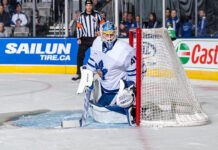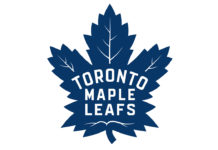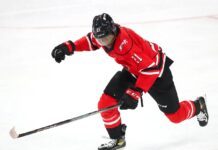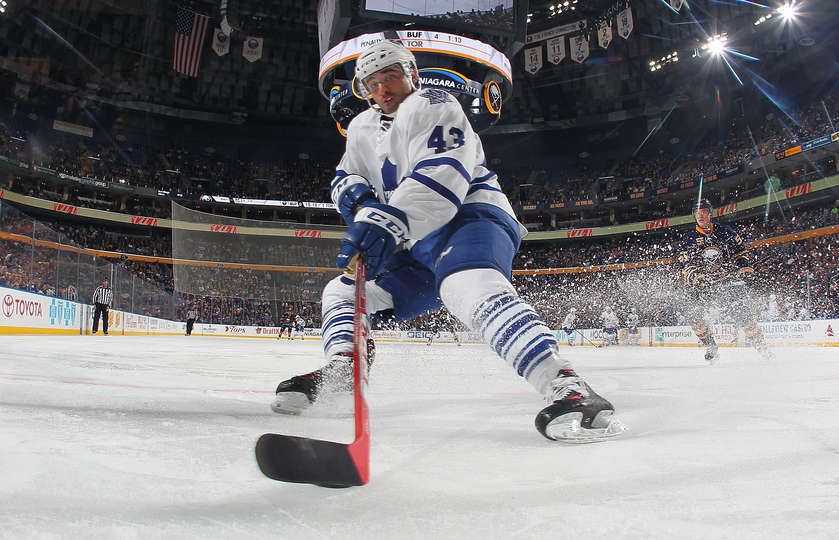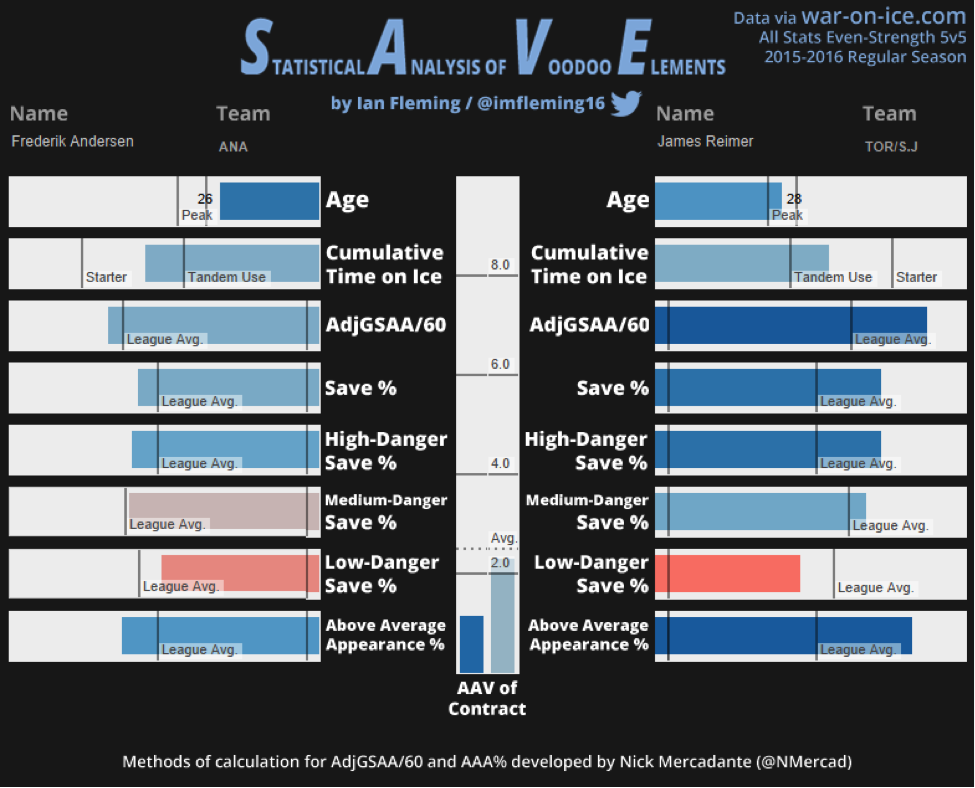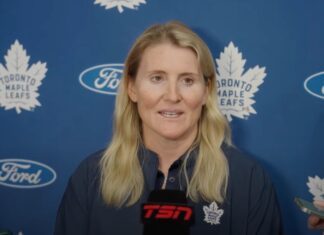While the Maple Leafs have been relatively quiet this summer, the team should look drastically different than the one that opened the 2015-16 season when you factor in all the spots open for the organization’s NHL-ready youth to step into.
If they are going to have a leap in success this season, though, an old face is going to have to be largely responsible for it.
Nazem Kadri might not have produced to the level fans were hoping for last year with 17 goals and 45 points in 76 games, but his value to the team goes far beyond goals and assists. Leading the forward group in average time on ice, it was often Kadri’s job to match up against the opponent’s best players night in and night out under Mike Babcock.
“He’s earned the right to play in those situations,” Babcock said of Kadri matching up against top lines in January. “You earn the right to play against those players and, eventually, those players will be playing against you… He’s playing way better. Every 10 games he’s improved drastically… He’s played against [John] Tavares and [Sidney] Crosby for three nights and he was good on two of them.”
Of Kadri’s 1091+ minutes of ice time last year, nearly 732 of them were with Leo Komarov and they ranked one and two among Leafs regulars in quality of competition. They had a 53.3CF% together, although their lack of scoring caused them to have only a 40% goals for percentage on the ice (this was with 31% defensive zone faceoffs overall).
Some of that can be attributed simply to goaltending. On top of the Leafs being 23rd in team save percentage last season, Kadri and Komarov were 17th and 18th on the team in on ice save percentage (only Brad Boyes and Nikita Soshnikov were worse). In fact, out of 290 players that played over 60 games last year, Kadri ranked 255th in on ice save percentage, while Komarov ranked 268th. While you can’t simply chalk a 40% goals for percentage up to bad goaltending, it certainly played a big part for a duo that controlled over 53% of the shots when they were on the ice.
Management has made steps to improve the goaltending going into next season (more on that below), and that should in part have a big impact on Kadri — and presumably Komarov’s — ability to match up. Interestingly, with James Reimer in net, Kadri had 53.8% goals for percentage, compared to 34.9% with Bernier.
Going into the season with a center group of Kadri, Tyler Bozak, Auston Matthews and — for the time being — one of Peter Holland or Brooks Laich, it will be really important for Kadri to handle the tough assignments because the rest of the group is either unable or unproven.
Bozak was placed in a slightly more sheltered role last season. He was given 57.7% offensive zone starts and was middle of the pack in terms of quality of competition/match-ups, mixed in with some key faceoff duties as a strong right-handed player at the dot. His 35 points in 57 games (.61PPG) was respectable in that role and he played 538+ of 756+ minutes with PA Parenteau. It’s easy to see Mitch Marner (or James van Riemdsyk) sliding into that role alongside Bozak on a scoring line that chips in consistently.
Matthews is expected to open camp as the third line center alongside William Nylander. He’s already played against men for a full season, and officially measured in at 6’2, 216 pounds at the NHL combine; it’s not unreasonable to expect him to get some tough match-ups particularly as the season goes on. In the short time that Babcock coached Nylander — albeit in no-pressure games — he slowly added more responsibility as time went on. Matthews’ 46 points in 36 Swiss League games has an NHL equivalency of 42 points over an 82 game season. He also outperformed Jack Eichel on the USDNP team in the past, and Eichel had 24 goals and 56 points as a rookie (his NHLe was 54). Hedging your bets somewhere between 40 and 60 points for Matthews is a fair bet at this point.
That leaves a fourth line with presumably Matt Martin on the left wing, and possibly Holland or Laich centering him (or dare I say Byron Froese?). Depending who the center is, they could be getting soft offensive zone starts, or soft defensive starts, and be able to handle their business.
It’s not difficult to see the increased scoring depth that is coming the Leafs way this season. Matthews is going to be their 3C, where Nick Spalling played for 35 games and put up seven points. Daniel Winnik, his frequent linemate, put up 14 points in 56 games before his trade to Washington. That third line will have Matthews and Nylander next season, and that will be a welcome addition to a team that was third last in the league in total goals in 2015-16.
However, the Leafs also tied for the sixth most goals against in the league. The defense is full of question marks. While the team believes they have improved their goaltending, it’s still unproven. The forward additions are youth and Matt Martin to this point. There are not a lot of players that you can point to on the roster and expect to do well against elite players on a nightly basis.
In order for the team to start moving up the standings, it’s going to start with Kadri matching up against the Crosbys, Stamkos’ and Barkovs of the East. The rest of the line-up, at forward anyway, is now better equipped to start producing offense behind him. They will be exciting, enthusiastic and will surely score a beautiful goal or two throughout the season, but if the team is successful we’ll likely look back and say it started with Kadri matching up against top lines and taking care of business.
Bernier Gone, Andersen officially ‘The Guy’
Once the Leafs gave Andersen a five year, $25M contract it was clear he was the unquestioned starter, but unlike the Bernier-Reimer fiasco, this management group did right by both and cut bait on Bernier. Really, the trade breaks down to this:
To Anaheim:
- 2016 1st round pick (Sam Steel)
- 2017 2nd round pick
- Jonathan Bernier (with $2M of his remaining salary paid)
To Toronto:
- Frederik Andersen
- Conditional draft pick
For Anaheim, it’s a tidy piece of business. They get two high draft picks and a backup goalie still possibly capable of more on a deal that saves them money as a budget team, in exchange for a goalie they were not going to keep.
For Toronto, the Bernier trade gets the Leafs out of having one of the most expensive tandems in the league and frees up money to avoid cap penalties on potential rookie bonuses to Mitch Marner and presumably Auston Matthews. That’s not insignificant.
The charts below compare Andersen quite favourably to Bernier based on just the 2015-16 season. Compared to Reimer, though, it is pretty equal. The real value in Andersen will be if he can stay healthy and play 55-60 games, which Reimer never proved he could do.
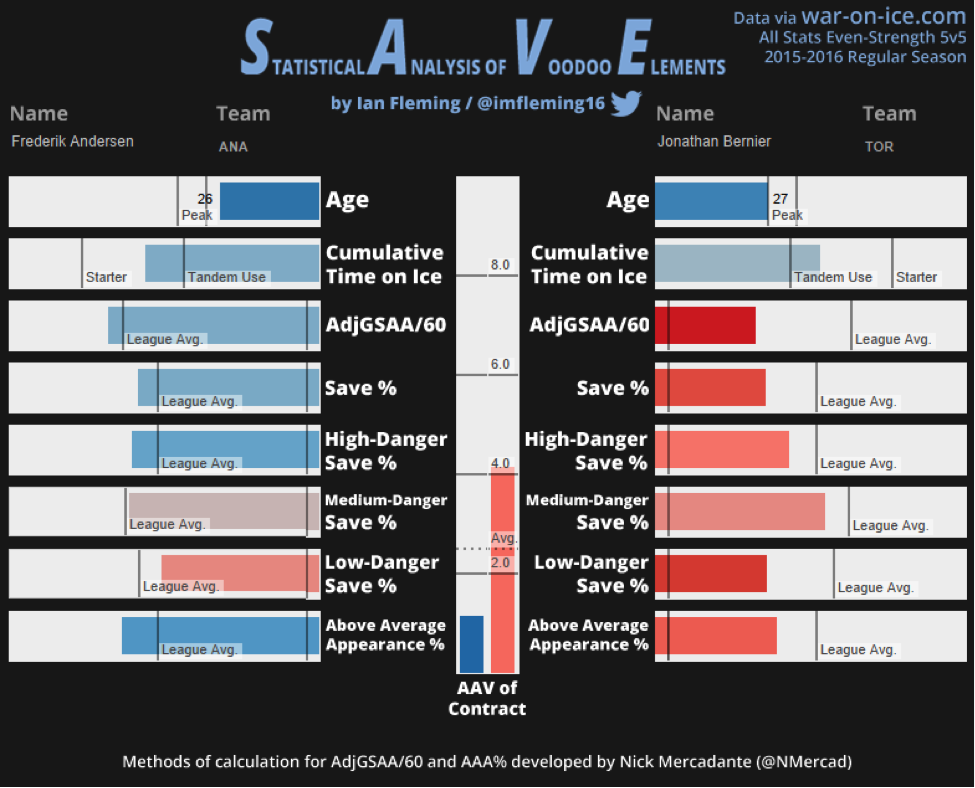
Applying Average Save Percentages
Flames Nation recently posted a neat article looking at the potential impact of their new goalies, and I wanted to copy it to see what difference we can find with the Leafs new goalie(s). Following the same formula, I only used 5v5 results as special teams fluctuate wildly from year-to-year. I used the cumulative 5v5 save percentage of Andersen over the last three seasons. Since the Leafs don’t have a veteran backup goalie signed (which Babcock alluded to wanting to add), I arbitrarily picked Jhonas Enroth, a solid veteran backup who fits the bill and is only 28. I split their starts 75-25 percentage wise against the 1,983 shots the Leafs gave up last season and here are the results:
| Goalie | 3yr 5v5sv% AVG | SA | SV | GA |
|---|---|---|---|---|
| Frederik Andersen | 92.56 | 1450 | 1342 | 108 |
| Jhonas Enroth | 92.30% | 533 | 492 | 41 |
*Note: This is a thought exercise more than anything else. I would not say it is predictive.
Last season, in the same amount of shots, the Leafs gave up 160 5v5 goals (third worse in the league), so it’s only a difference of 12, which would result in a few more wins if averages held up. It also doesn’t move the needle much on their 29th ranked goal differential of -48.
What it speaks to more than goaltending is that the Leafs gave up a high volume of shots last season. Only three teams in the league (Ottawa, Colorado and Vancouver) gave up more 5v5 shots on goal. So, while goaltending has been a big debate in terms of whether they have improved –which is completely justified—a large part of the conversation has to turn to their defense and overall ability to start limiting shots on goal.
It is worth remembering that Toronto did get 32 games of .918 goaltending from James Reimer and went only 11-12-7 in that time.
Defense still needs work
If the current defense holds up, there will be only two differences between last year’s season-opening group and the upcoming one. The first is, of course, Dion Phaneuf is gone. The second is Scott Harrington is, too. Roman Polak actually didn’t play the season opener last year, so he might be ‘new’ to the group compared to who opened last season (or Frank Corrado, or Connor Carrick) in addition to Nikita Zaitsev (you never know with someone crossing the pond for the first time).
That hardly qualifies as marked improvement for a group that wasn’t very good last season.
We discussed the Roman Polak acquisition on a podcast over the weekend. While Brendan Shanahan did call him a depth defenseman, it doesn’t particularly add up with him being the third-highest paid defenseman on the team (not including Stephane Robidas) and the fact that they played him 19:44 per night last year. Maybe the young right-handed defensemen step up and Polak doesn’t play much, but it’s hard to envision him suddenly being a regular outside their top six when the group has arguably gotten worse in a year (save for continued development from Morgan Rielly).
As noted above, Kadri is going to get the bulk of the tough assignments, but he is going to need help. Right now, the team lacks any sort of dependable shutdown pairing and there isn’t a whole lot in the pipeline on its way that you would consider ‘blue chip.’
The free agency pool next season has some potentially helpful pieces on the high end like Brent Burns and Kevin Shattenkirk, and some potential top four options like Karl Alzner, Michael Del Zotto and Dmitry Kulikov. That’s not a lot to go off of.
Barring a young player in the organization emerging as a top flight defender, the Leafs are most likely going to have to go the trade route at some point in the next two seasons to add a significant top four defenseman to the group.













